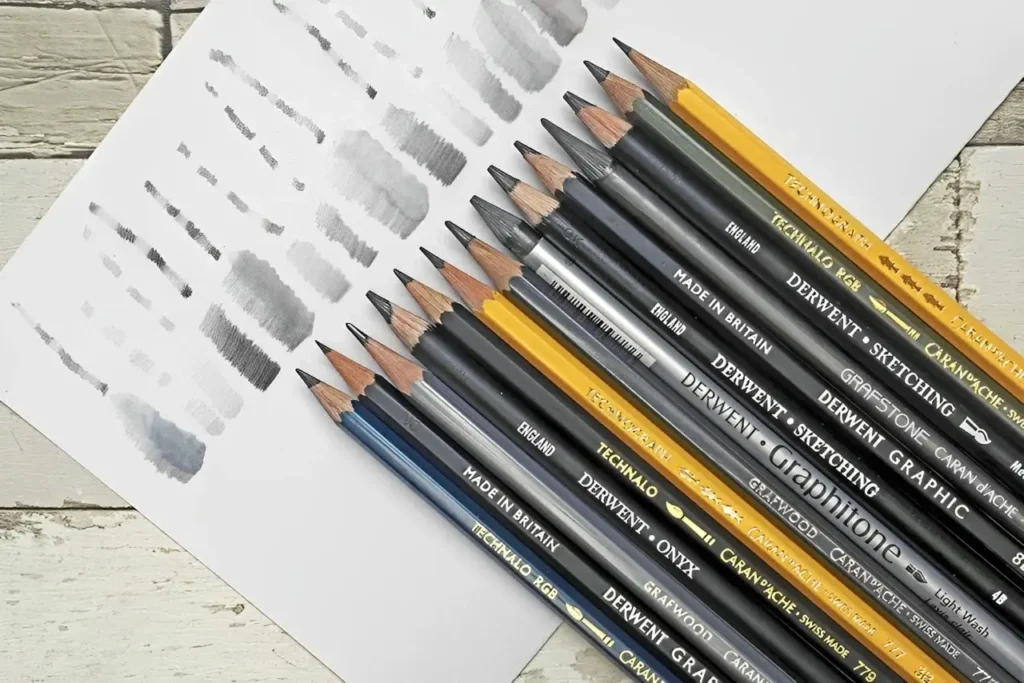Are you ready to dive into the world of sketching? Choosing the right pencil can make a significant difference in your artwork. From graphite to charcoal, each type of sketching pencil offers unique qualities that can enhance your drawings. In this guide, we’ll explore the various types of sketching pencils, helping you find the perfect tool for your artistic journey.
Graphite Pencils:
Graphite pencils are the most common and versatile type of sketching pencil. They range from hard to soft leads, denoted by the H and B grading system. Hard pencils (H) create lighter, finer lines ideal for detailed work, while soft pencils (B) produce darker, bolder strokes perfect for shading and blending.
Graphite pencils are excellent for beginners and professionals alike. Their wide range of grades allows for intricate detailing and smooth gradations in shading. Brands like Staedtler and Faber-Castell offer high-quality graphite pencils that are favored by artists worldwide.
Charcoal Pencils:
Charcoal pencils offer a different sketching experience with their rich, intense blacks and softer texture. They come in various forms, including compressed, vine, and pencil form. Compressed charcoal pencils produce darker, more permanent lines, while vine charcoal provides lighter, more erasable marks.
Charcoal pencils are ideal for creating dramatic, expressive drawings. They are especially popular for figure drawing and portraits, as they allow for deep shadows and bold highlights. Artists like Derwent and General’s offer excellent charcoal pencil options.
Colored Pencils:
Colored pencils bring vibrancy and color to your sketches. They come in a wide array of hues and can be layered to create rich, complex colors. Some colored pencils are wax-based, offering smooth, blendable color, while others are oil-based, providing more precise control and detail.
Colored pencils are versatile tools for both beginners and advanced artists. They can be used for everything from simple coloring to detailed, realistic drawings. Popular brands include Prismacolor, Caran d’Ache, and Faber-Castell.
Mechanical Pencils:
Mechanical pencils are favored for their precision and convenience. They have a consistent line width, making them ideal for detailed work and technical drawings. Mechanical pencils come with replaceable leads that vary in hardness, similar to traditional graphite pencils.
These pencils are perfect for artists who prefer a clean, consistent line without the need for sharpening. They are also great for on-the-go sketching due to their compact size and refillable leads. Brands like Pentel and Rotring are well-known for their high-quality mechanical pencils.
Watercolor Pencils:
Watercolor pencils combine the control of colored pencils with the fluidity of watercolor paint. When used dry, they function like regular colored pencils, but when water is applied, the pigment dissolves to create a watercolor effect.
These pencils are fantastic for adding a splash of color and texture to your sketches. They are particularly useful for creating vibrant, expressive artwork. Artists can blend colors smoothly and create various effects by manipulating water application. Derwent and Staedtler offer high-quality watercolor pencils that are popular among artists.
Choosing the right type of sketching pencil can greatly impact your artwork. Whether you prefer the versatility of graphite, the boldness of charcoal, the vibrancy of colored pencils, the precision of mechanical pencils, or the fluidity of watercolor pencils, each type offers unique advantages. By understanding the different types of sketching pencils and their uses, you can elevate your drawing skills and bring your artistic visions to life.
FAQS
By exploring these questions, you can gain a deeper understanding of the various types of sketching pencils and how to use them effectively in your artwork. Whether you’re just starting or looking to expand your artistic toolkit, choosing the right pencils can enhance your creativity and bring your sketches to life.
